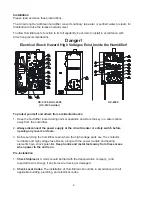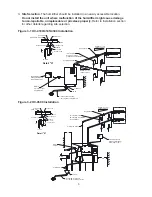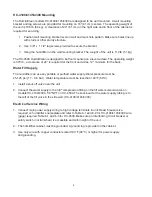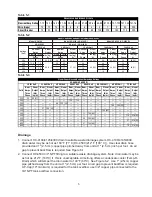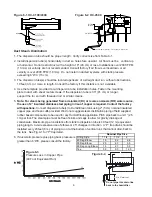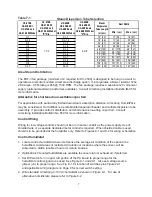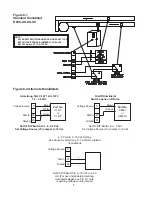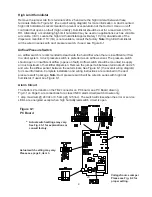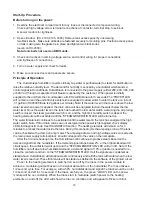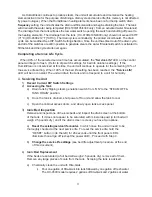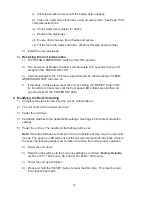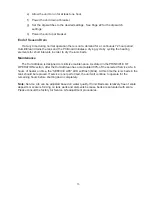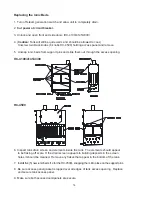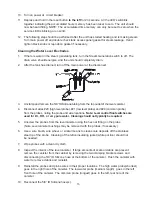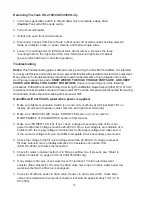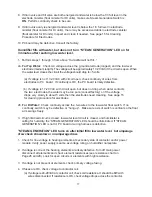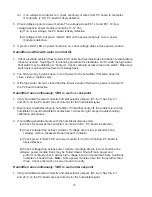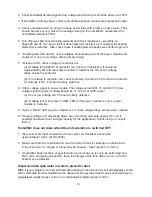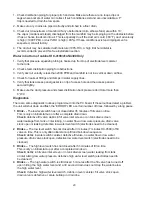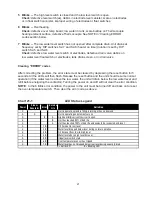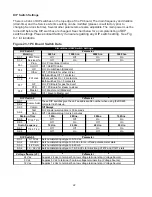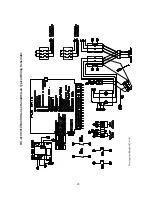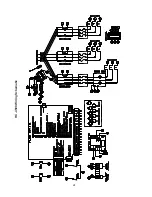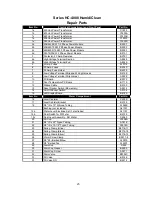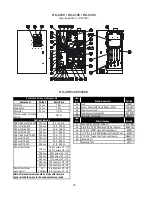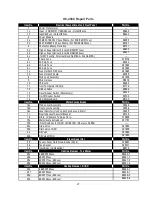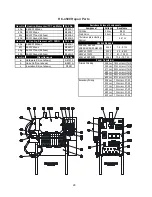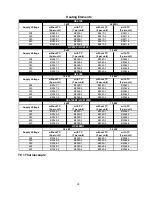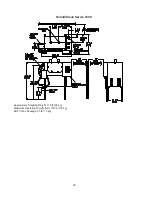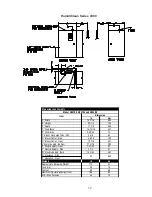
16
Removing The Tank HC-4100/4145/4300 Only
1. Turn steam generation switch to off and allow unit to complete a deep drain.
(Caution: Tank will still be quite warm).
2. Turn off circuit breaker.
3. Unlock and open front and side doors.
4. Disconnect 3 hoses from front of tank; rubber hose cuff at steam outlet; heating element
leads at contactor, fuses, or power module; and thermocouple wires.
5. Loosen 3 mounting bolts on left side of tank, do not remove. Remove the three
mounting bolts on the right side of the tank. Slide tank out right side of cabinet
(be sure tank had time to cool after operation).
Troubleshooting
Notice: This troubleshooting guide is offered to aid in servicing the HC-4000 humidifiers. It is intended
for use by electricians and technical service personnel familiar with electrical and electronic equipment.
Many steps in the troubleshooting procedures require measurements of high voltages and involve
working near exposed live parts. KNOW WHERE THE HIGH VOLTAGE PARTS ARE, AND KEEP
HANDS AND METAL TOOLS AWAY FROM THEM. If unsure concerning any of the following
procedures, PLEASE consult the factory, Armstrong Humidification Department at (269) 273-1415. All
resistance checks should be made with main power OFF and the component disconnected from wiring.
All continuity checks should be made with main power OFF.
Humidifier will not fill with water when power is applied.
1. Make sure Steam Generation Switch is on and verify continuity at terminal block TB1 on
display circuit board (between center common and right most terminals).
2. Make sure “SERVICE LIFE” and/or “ERROR” LEDs are not on. If so, refer to
MAINTENANCE or DIAGNOSTICS section of this manual.
3. Make sure “POWER” LED is lit. If not, check voltage at secondary side of the main
power transformer. Voltage should be 24-28 VAC. No or low voltage is an indication of a
problem with the supply voltage or transformer. Verify supply voltage and make sure it
is the same as voltage rating on humidifier nameplate. Check secondary power fuses.
4. Check the voltage to the fill valve. Voltage should be 24-28VAC. If voltage is present,
fill valve solenoid coil is probably defective. Coil resistance should be 18
Ω
(8.8
Ω
HC-4500) with wires disconnected.
5. Check for water in cabinet bottom or in fill cup overflow line. If present, see “Water in
bottom of cabinet” on page 20 (HC-4100/4145/4300 only).
6. If no voltage to fill valve, check water level. If it is above 1/3 full in electrode level
canister (float canister for DI units), the drain valve has to open to drain water below low
water level before the fill valve is energized.
7.
Check for 24-28 Vac power to drain valve. If power to drain valve is OK, check drain
valve coil resistance with wires disconnected. It should be approximately 10
Ω
(4.1
Ω
HC-4500).

